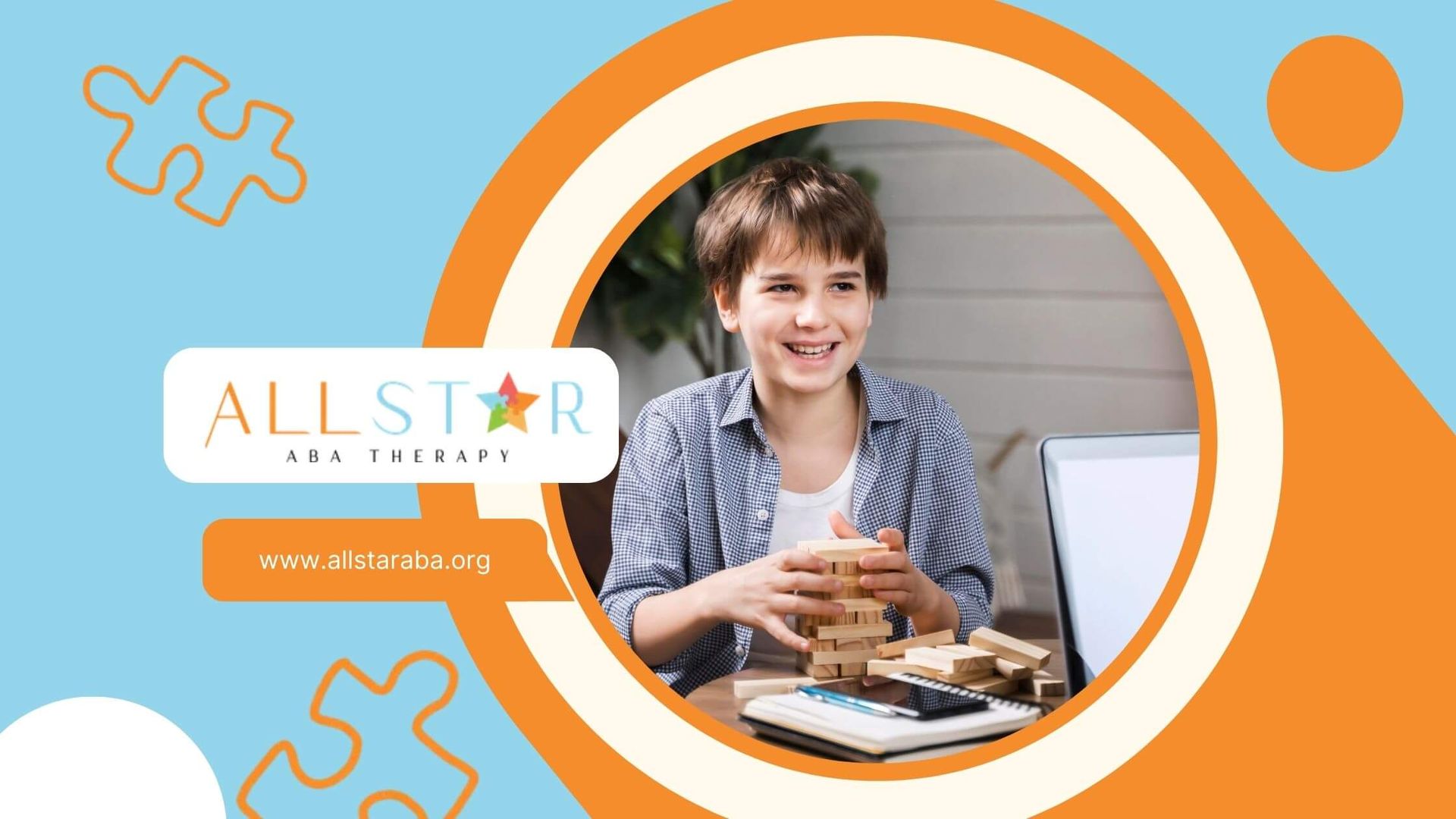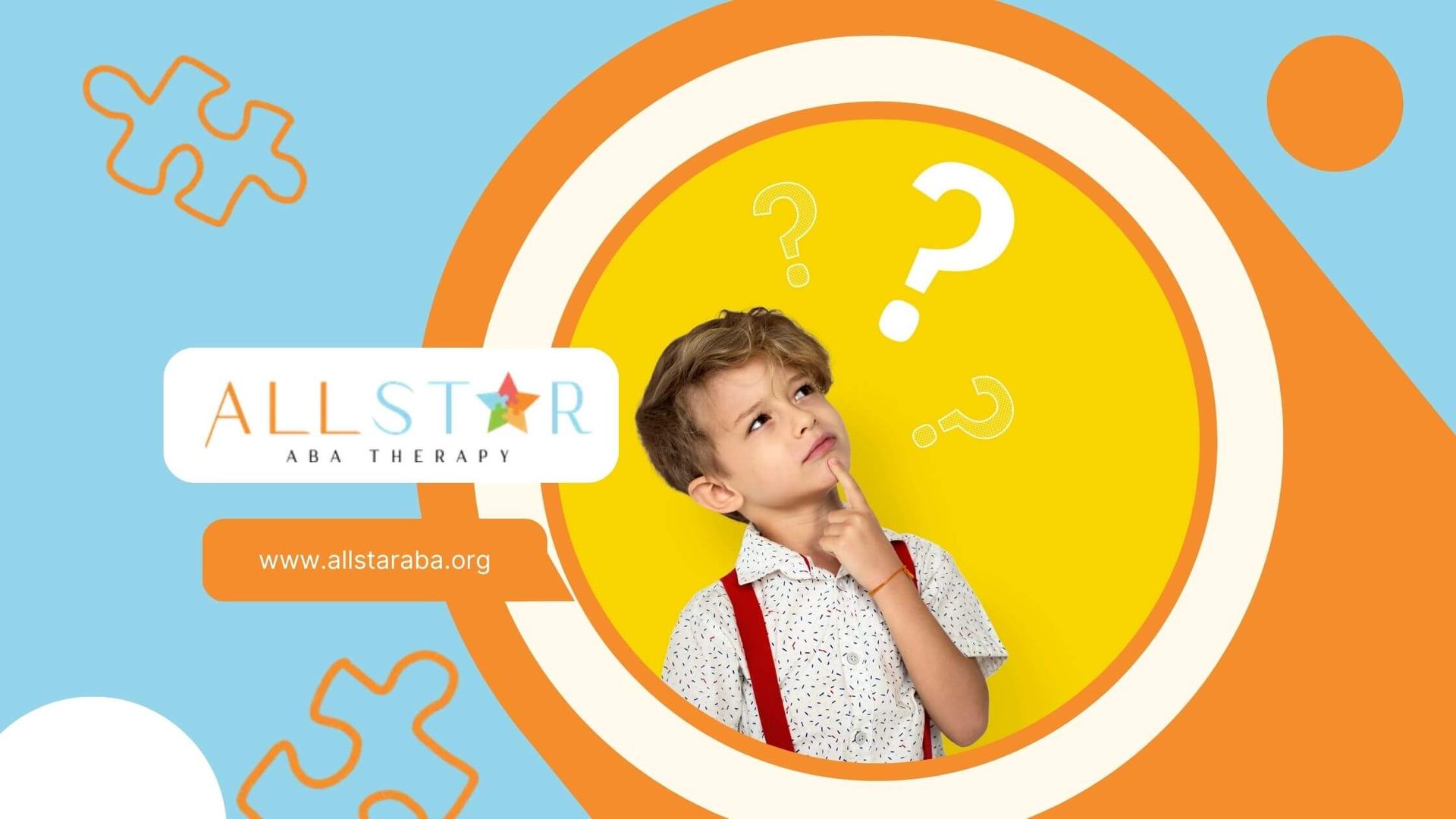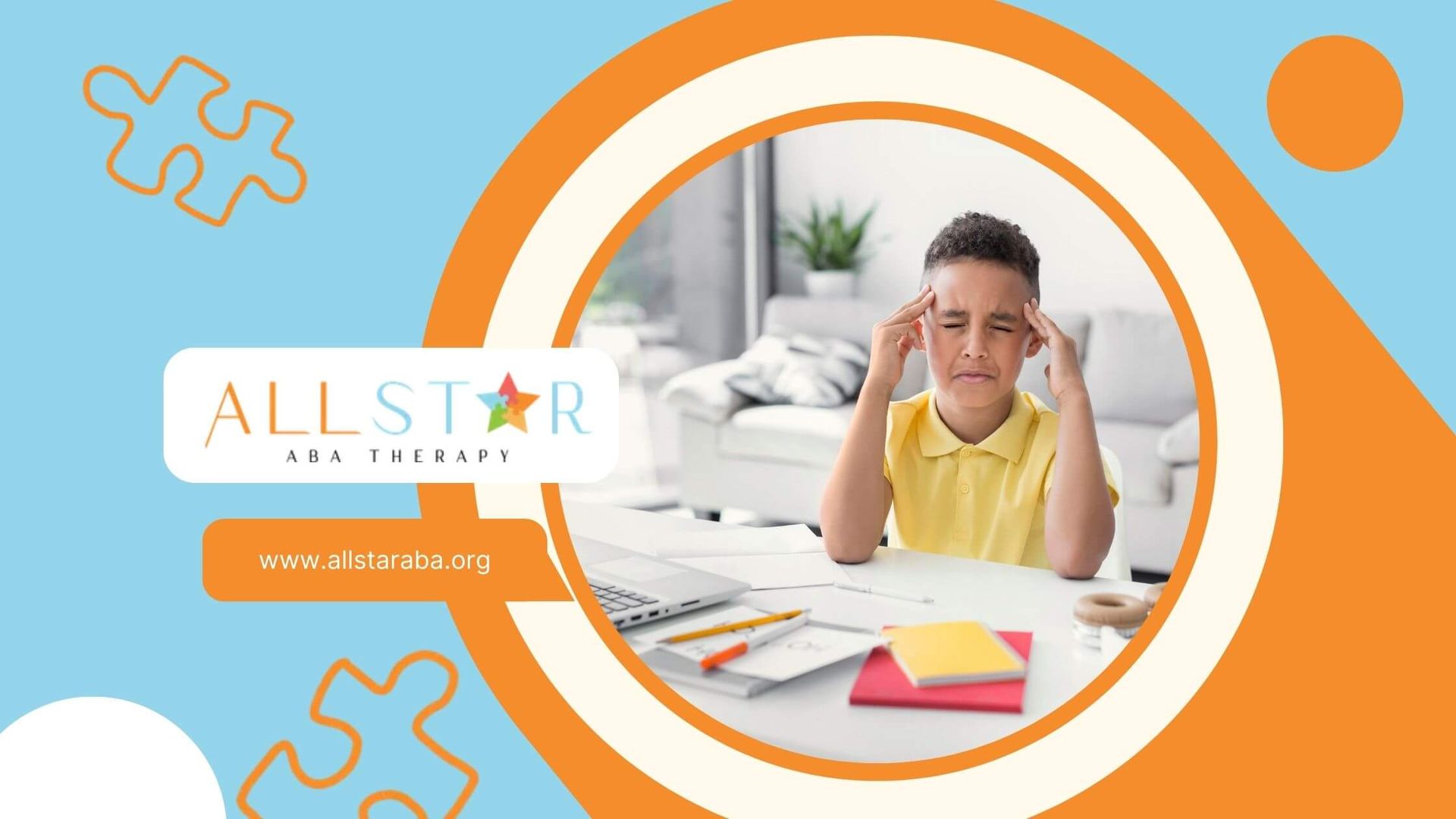New Paragraph
Managing Autism Overstimulation in Kids and Teens
This is a subtitle for your new post
Autism overstimulation is more than just a tantrum—it’s a real sensory struggle. As an ABA therapy provider in Maryland, All Star ABA works closely with families across Baltimore to ease this burden. Let’s explore exactly how you can help your child feel calmer and safer every day.
Identifying Signs of Overstimulation in Autism
Every autistic person has their own way of dealing with overstimulation. It is important to know the signs to help them quickly. Signs like irritability, anxiety, or wanting to be alone can show that they are feeling sensory overload. By understanding these signs, caregivers can better meet their sensory needs.
Along with behavior, pay attention to any physical discomfort or how they act in noisy or busy places. Noticing these signs will help you know when to step in and help in overwhelming situations.
Common Physical and Emotional Signs
When sensory overload happens, it can cause physical pain and discomfort. Autistic individuals might feel head pain, nausea, or muscle tension during these times. They may also react to sensory hypersensitivity. Bright lights, loud noises, and certain textures can lead them to avoid these stimuli by covering their ears or shielding their eyes.
Emotionally, anxiety and irritability often show up when overstimulation occurs. This can lead to emotional distress, causing meltdowns or withdrawing from social situations. It can also make it hard to focus.
Frustration may build as the person tries to manage their sensory input.
Behaviorally, responses like stimming—such as rocking or hand-flapping—help autistic individuals to soothe themselves. By recognizing these signs of overstimulation, caregivers can help provide support during tough moments related to sensory overload.
Differences in Overstimulation Among Various Ages
Children show their responses to overstimulation in different ways. This depends on their age and how they process sensory input. Younger autistic children may find loud noises and bright lights very challenging. This can lead to emotional meltdowns because they cannot express their feelings or understand what they are going through.
Teenagers have their own sensory processing difficulties. They can feel overstimulated in social settings or under academic pressure. For example, the noise of school cafeterias or a loud classroom can make them more sensitive to sensory input. This may lead them to withdraw or have trouble focusing.
Autistic adults deal with a lot of sensory input in their daily lives. Loud workplaces, strong smells, or busy public spaces can be very overwhelming. Because each age group experiences overstimulation differently, it’s important to have specific strategies to meet their unique sensory needs.
Understanding Sensory Triggers
Sensory triggers are different for each autistic individual. However, many of them struggle with external things that can upset their senses. Bright lights, loud noises, and certain touches can cause stress. Some may also find strong smells or background noise challenging.
It is important to know each person's sensory triggers for better support. By understanding what stresses them, caregivers can change environments and routines. This can help reduce the impact of overwhelming stimuli and help create comfort and stability.
Types of Sensory Input that Trigger Overstimulation
Loud noises and high-pitched sounds can be very hard for autistic individuals to handle. These sounds can overwhelm their hearing. Similarly, bright lights and flickering screens can distract their vision and cause discomfort.
Certain textures can also trigger problems. Scratchy fabrics, cold surfaces, or unexpected touches can lead to bad feelings. Touch-based sensory sensitivities often cause people to pull away or refuse to wear certain clothing materials.
Overly strong smells are another common issue. Strong fragrances or food odors can create distress for autistic individuals. It's important to understand how different sensory input affects each person. This understanding helps prevent overwhelming moments and creates better supportive environments.
How to Recognize Potential Triggers in Daily Activities
Daily activities can bring about triggers that may overwhelm people with sensory sensitivities. For example, busy places like shopping malls or loud family dinners can cause sensory overload. It is important to notice any signs of discomfort during these times.
Here are some signs you can look for to identify triggers:
- More irritability or refusal to do certain routines or tasks.
- Physical reactions, like covering eyes or ears in loud places.
- Strong focus on repeating behaviors or self-soothing actions.
Making small changes to daily routines can help manage these sensory challenges. Being aware and paying attention during everyday activities, like moving from one thing to another, eating, or doing chores can lower sensory-related stress a lot.
Strategies to Manage Overstimulation
Helping autistic individuals deal with sensory overload includes quick solutions and long-term plans. Using sensory tools or setting up calming routines during times of overload can help them manage better.
Caregivers can also use smart sensory management strategies. This means changing their surroundings, starting sensory-friendly routines, or using special methods designed for the person. These strategies help autistic individuals face sensory challenges with more comfort and confidence.
Techniques for Immediate Relief from Sensory Overload
Deep breathing is an easy but helpful way to cope. It helps a person concentrate on breathing slowly and purposefully. This can lower anxiety and calm sensory overload.
Using sensory-friendly tools like stress balls, fidget toys, or soft blankets can help right away. These things help shift focus and soothe busy sensory systems.
Making a safe and quiet space reduces outside noises. This gives a person a chance to recover from overwhelming situations. Whether it's a dim room or a cozy spot, having a place to relax is very important for dealing with sensory overload.
Long-Term Strategies to Reduce Occurrences
Using sensory-friendly tools consistently can help avoid overstimulation instead of just dealing with sudden stress. Having stress balls, tactile objects, or relaxing visual elements available regularly allows for better sensory control.
Making changes to the environment, like adjusting lighting or reducing background noise, helps maintain good sensory management. This support allows autistic individuals to handle daily life more easily.
It's important to have sensory management strategies that fit each person’s needs. These can include specific methods like using visual supports, calming schedules, or therapy to improve sensory processing skills.
The Role of Parents and Caregivers
Parents and caregivers play a key role in managing sensory overstimulation. When they understand sensory sensitivities, they can make sure that surroundings are supportive and comfortable.
By watching for triggers, changing daily routines, and adding calming activities, caregivers help autistic individuals deal with overstimulation in a respectful way.
How to Support Through Changes in Environment
Creating a sensory-friendly space means getting rid of clutter, reducing noise, and adding familiar decorations. Soft lighting and gentle colors can make the environment feel more comfortable.
Adding calming areas with special touches like soft fabrics, fidget toys, or visual cues helps autistic individuals feel safe. These areas provide a place to relax during times of stress and overstimulation.
You can make regular adjustments by watching how different sensory triggers affect the space. These changes can help keep things stable and create a supportive area that meets individual needs.
Communication Strategies to Understand Needs
Open and regular communication is very important for understanding sensory needs in autism. Visual aids and social stories can help individuals share their discomfort or what they like.
Teaching autistic children to express their feelings, either by talking or using assistive technologies, encourages self-advocacy. Parents can have meaningful conversations to ask about triggers or overwhelming situations.
Making sure there is a two-way conversation where autistic individuals feel safe to talk about their sensory needs helps everyone understand how to manage daily routines better.
Conclusion
Helping your child manage sensory overload is possible—and you don’t have to do it alone. At All Star ABA, we offer personalized ABA therapy services across Maryland that are tailored to each child’s sensory profile and emotional needs.
If your loved one is struggling with autism overstimulation, our expert team is here to help. Contact us at office@allstaraba.org or call 410-220-5970 to schedule your consultation today. Let’s work together to create a calmer, more comfortable future for your child.
Frequently Asked Questions
What are the first signs of overstimulation in autistic children?
The first signs of overstimulation in autistic children can be sensory sensitivities. These may show up as things like increased irritability or physical discomfort. For example, a child may cover their ears or eyes. They can feel distressed in loud or brightly lit environments. It is important to recognize these sensory issues. Doing so can help with intervention and support during overwhelming times.
How can I create a sensory-friendly home environment?
To make your home more friendly for the senses, add calming features. Use soft lighting, tools to reduce noise, and keep things organized. You can also add tactile items like pillows or fidget toys. This way, your home can be a supportive and safe space for those with sensory sensitivities and sensory needs.
What are effective calming techniques during a sensory overload episode?
Effective ways to calm down include deep breathing exercises and using sensory tools like stress balls or weighted blankets. It's also helpful to guide the person to a quiet and safe place. These coping strategies can give quick relief during times of sensory overload. They help people feel more comfortable and in control.
Sources:
- https://www.medicalnewstoday.com/articles/sensory-overload
- https://health.clevelandclinic.org/sensory-overload
- https://www.autismspeaks.org/sensory-issues
- https://www.understood.org/en/articles/what-is-sensory-overload
- https://childmind.org/article/sensory-processing-issues-explained/
Need Support?
We're Here to Help!
Our experienced team is ready to assist you. Reach out today to discuss how we can support your child's development and well-being.
Get started with expert ABA therapy today.








